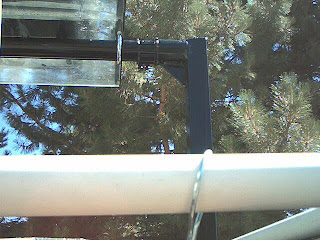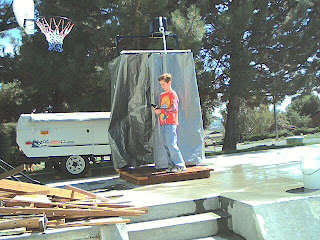
Edge Products came into being during late 1999 and early 2000 with their Dodge Comp product. Later they built the Chevy product for the LLY engines. Their early products used a limited user interface. The Comp had a push button interface with an LED bar graph showing the power level.
 One of the reasons that Edge Products were so big was the LCD display that they paired with their Juice products. The early displays were built using the Zilog 642120 processor. Zilog's processor is a RISC processor (Reduced Instruction Set). It's really quick and does a great job. One of the problems that this processor had was the memory was limited to only 64k. For approximately two years during the time when the display was in production, Edge Products lobbied Zilog to increase the memory and to add at least one CAN (Controller Area Network) channel to the processor.
One of the reasons that Edge Products were so big was the LCD display that they paired with their Juice products. The early displays were built using the Zilog 642120 processor. Zilog's processor is a RISC processor (Reduced Instruction Set). It's really quick and does a great job. One of the problems that this processor had was the memory was limited to only 64k. For approximately two years during the time when the display was in production, Edge Products lobbied Zilog to increase the memory and to add at least one CAN (Controller Area Network) channel to the processor. Here's a picture of Zilog's booth in 2003 - Notice on display is the Comp and the 1st version of the Ford Juice
Here's a picture of Zilog's booth in 2003 - Notice on display is the Comp and the 1st version of the Ford JuiceUnfortunately for Zilog, they didn't listen to the customer and Edge Products re-built the Attitude display using the Freescale 9S12DT128 with a whopping 128k of memory. During the early years of the Attitude (1.0), memory was not a problem at least up to the release of the Ford Platinum Juice. Most functions selectable from the early Juice modules were only concerned with power levels. The "new" transmission introduced with the 6.0L (the 5R110) was a transmission that would adapt or "learn" the driving style of the driver. This allowed the transmission to compensate for wear.
 Here's a picture of the Attitude 1.5 development board.
Here's a picture of the Attitude 1.5 development board.During the development of the early Juice modules, several customers indicated that with additional power came additional problems with the transmission. With the build of the Ford Platinum, Edge Products wanted to eliminate the problems and be able to enhance drive ability by controlling the transmission. The Ford transmission introduced sometime in the 2003 model year had a built-in transmission controller that was controllable via CAN. This allowed the Juice Platinum to have some control over how the transmission shifted - Edge Products called the control "Shift Firmness". By controlling the shift firmness or the pressure to the clutch plates, the Platinum could reduce the wear on the transmission by limiting slip - Here's a great page that describes the features of the Platinum: https://secure.racepartsdirect.com/pdf_datasheet.php?products_id=4502

So the development of the Attitude 1.5 was based on the need for additional menus that would direct the Platinum to control the transmission - The new trucks also had new features that could be displayed such as barometric pressure etc. To display all of these new features requires more memory. As a side note, Freescale was an excellent choice as a micro controller for a lot of reasons; 1) scalability their 9S12 product scales from minimalistic 48 pin controllers typically in the $3.00 to $5.00 price to maximality 112 pin controllers that have CAN, LIN, Serial, MISO, I2C and all kinds of I/O FlexCAN, MSCAN - Here's the road map: http://www.freescale.com/files/automotive/doc/roadmap/S12-S12XAUTOROADMAP.pdf?tid=tS12Xdr
With Freescale's line-up, Edge Products can scale either by price or by features the Attitude 1.5 display.

Using the Freescale micro controllers allowed Edge Products to scale the Attitude controller as a body controller, simple display, programmer, etc. One of the important features was the 9S12DT128 that had a J1850 interface on the chip. This allowed their Evolution II to directly communicate with vehicle J1850 without having to re-write communication protocol.
Here's a mod for making the Attitude a Vacuum/Boost gauge. This allows for simple display and setting of an alarm when the vehicle is not performing efficiently. By using an MPX4250AP and reprogramming the menus, and watching the display, a person can make a huge reduction in fuel costs - Up to 20% depending on driving style.
 Here is the modified case that will allow the inclusion of the pressure sensor board
Here is the modified case that will allow the inclusion of the pressure sensor board

























